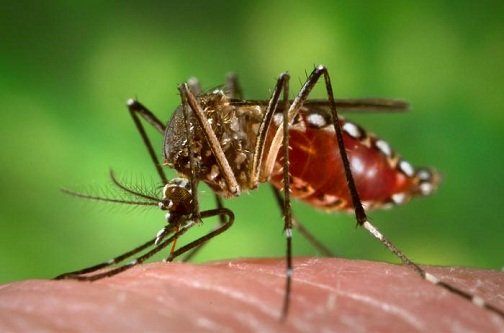Chikungunya: New Caribbean virus with rapid spreading makes thousands of victims
Thousands of people in Carribean hospitals are the victims of a virus with a long and unfamiliar name that has been spread rapidly by mosquitoes across the islands after the first locally transmitted case was confirmed in December.
They suffer searing headaches, a burning fever and so much pain in their joints they can barely walk or use their hands. It’s like having a terrible flu combined with an abrupt case of arthritis.
The virus is chikungunya, derived from an African word that loosely translates as “contorted with pain”. People encountering it in the Caribbean for the first time say the description is fitting. While the virus is rarely fatal it is extremely debilitating.
Outbreaks of the virus have long made people miserable in Africa and Asia. But it is new to the Caribbean, with the first locally transmitted case documented in December in French St. Martin, likely brought in by an infected air traveler. Health officials are now working feverishly to educate the public about the illness, knock down the mosquito population, and deal with an onslaught of cases.
Authorities are attempting to control mosquitoes throughout the Caribbean, from dense urban neighborhoods to beach resorts. There have been no confirmed cases of local transmission of chikungunya on the US mainland, but experts say the high number of travelers to the region means that could change as early as this summer.
So far, there are no signs the virus is keeping visitors away though some Caribbean officials warn it might if it is not controlled.
“We need to come together and deal with this disease,” said Dominica Tourism Minister Ian Douglas.
The Pan American Health Organization reports more than 55,000 suspected and confirmed cases since December throughout the islands. It has also reached French Guiana, the first confirmed transmission on the South American mainland.
“It’s building up like a snowball because of the constant movement of people,” said Jacqueline Medina, a specialist at the Instituto Technologico university in the Dominican Republic, where some hospitals report more than 100 new cases per day.
Chikungunya was identified in Africa in 1953 and is found throughout the tropics of the Eastern Hemisphere. It is spread by two species of mosquitoes, aedes aegypti and aedes albopictus. It’s also a traveler-borne virus under the right circumstances.
It can spread to a new area if someone has it circulating in their system during a relatively short period of time, roughly 2-3 days before the onset of symptoms to 5 days after, and then arrives to an area with the right kind of mosquitoes.
For years, there have been sporadic cases of travelers diagnosed with chikungunya but without local transmission.
The two species of mosquitoes that spread chikungunya are found in the southern and eastern US and the first local transmissions could occur this summer given the large number of American travelers to the Caribbean.
Already, the Florida Department of Health has reported at least four imported cases from travelers to Haiti, the Dominican Republic and Dominica.
Around the Caribbean, local authorities have been spraying fogs of pesticides and urging people to remove standing pools of water where mosquitoes breed.
An estimated 60-90% of those infected show symptoms, compared to around 20% for dengue, which is common in the region. There is no vaccine and the only cure is treatment for the pain and fluid loss.
[youtube 9GLbDp7np8A 650]

